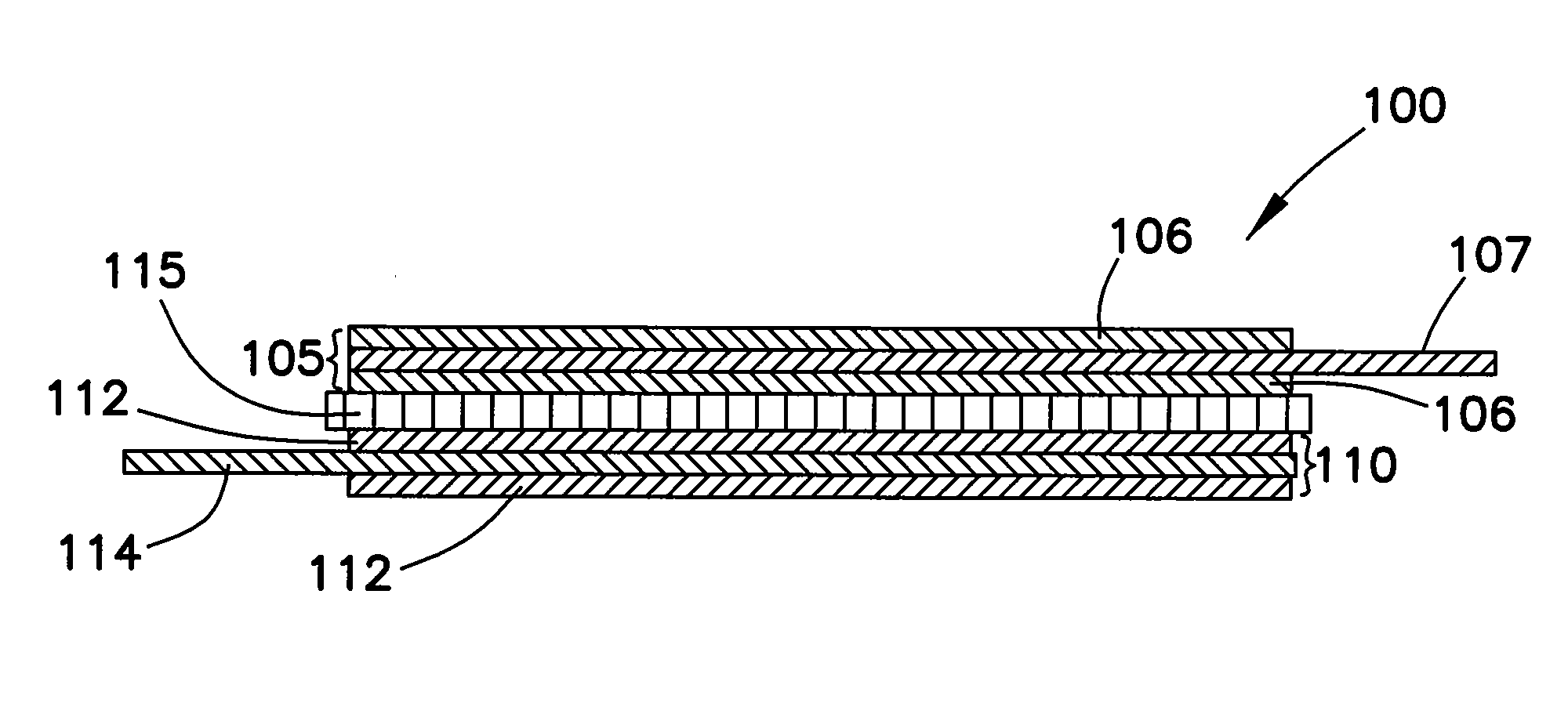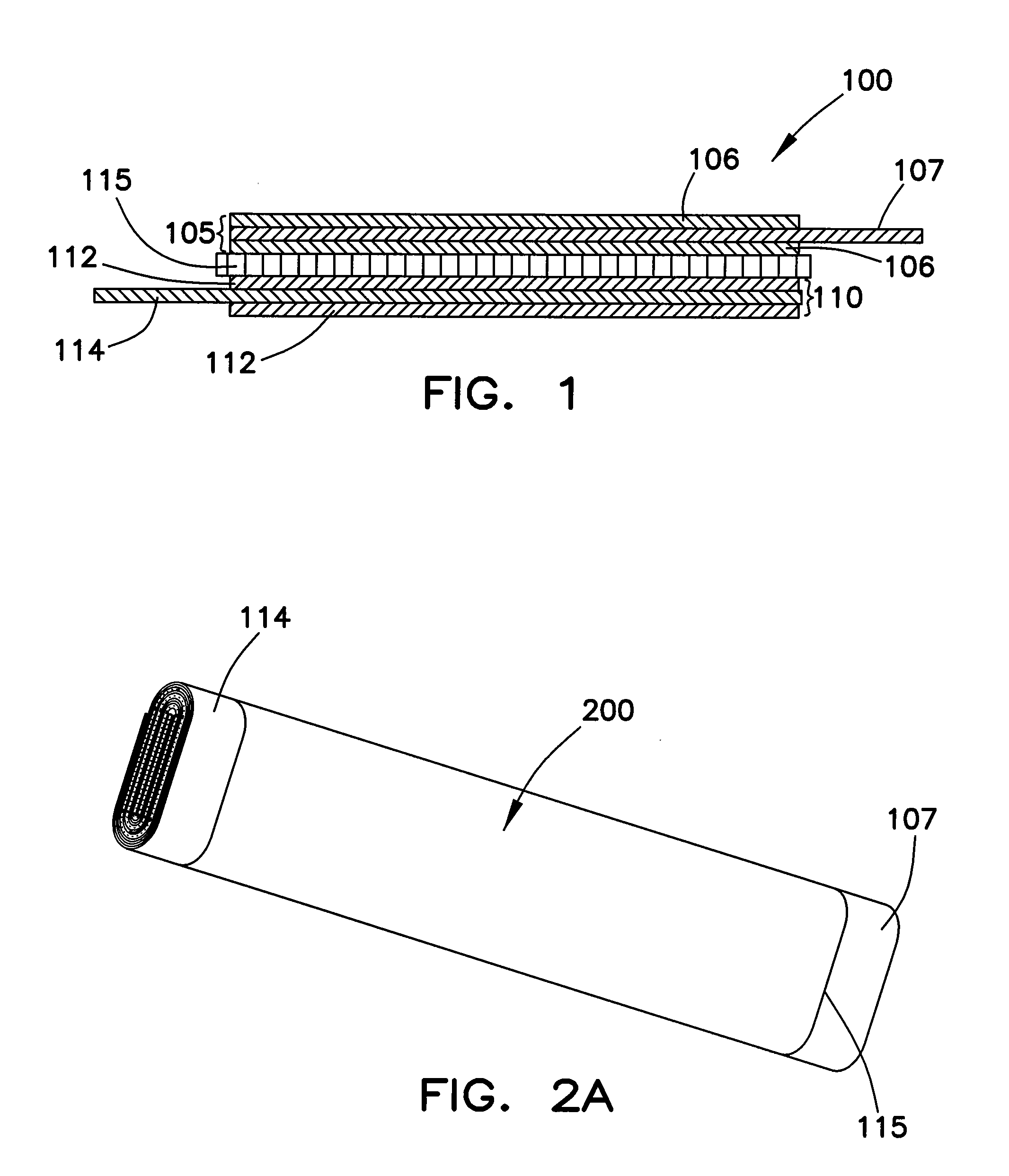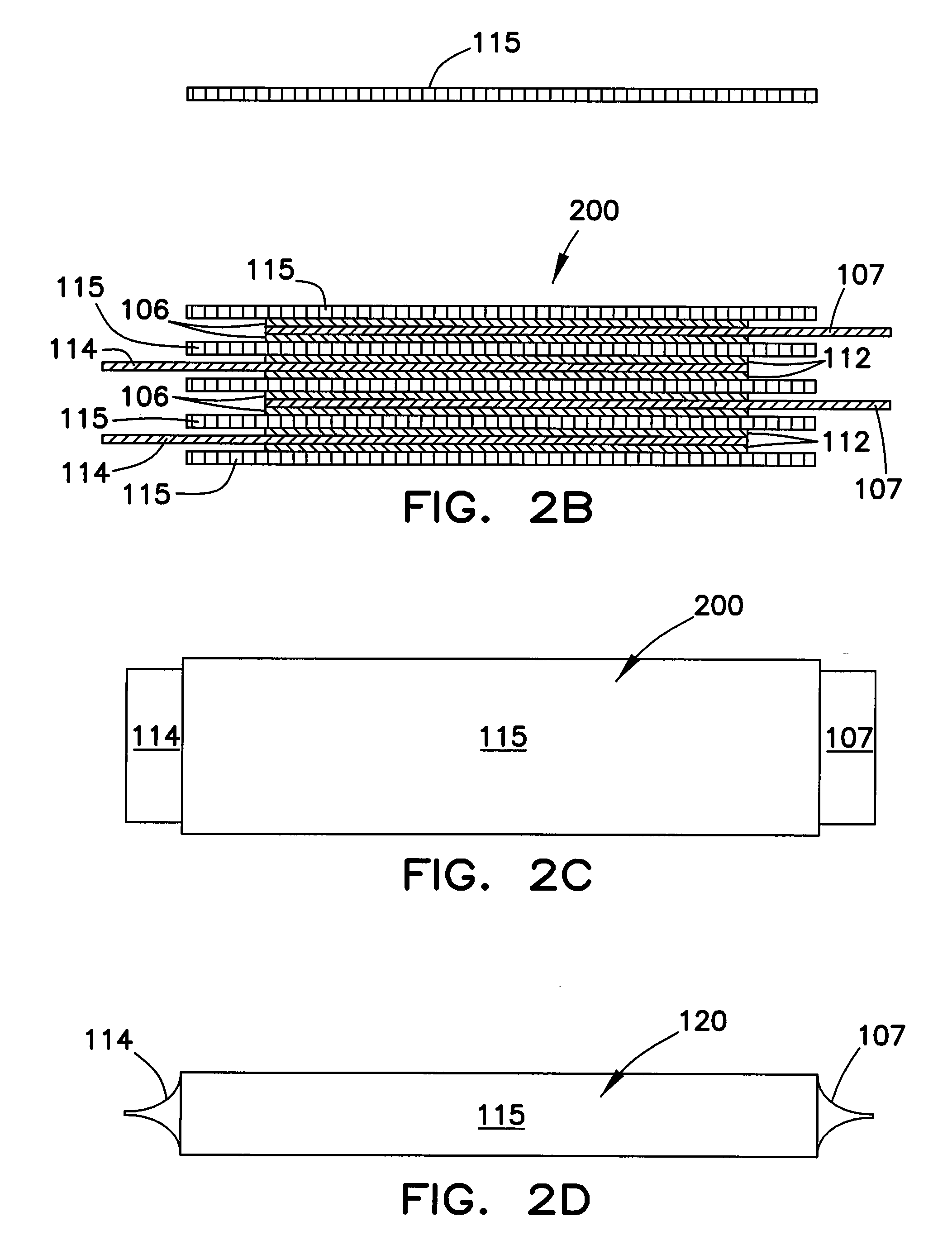Battery electrode sheet
a battery electrode and electrode technology, applied in the field of lithium ion battery cells and systems, can solve the problems of increasing public awareness of cost and environmental issues, deficient battery systems for use with electric motors employed in pure electric and hybrid vehicles, and inability to meet the needs of electric motors,
- Summary
- Abstract
- Description
- Claims
- Application Information
AI Technical Summary
Benefits of technology
Problems solved by technology
Method used
Image
Examples
first embodiment
[0256]The first embodiment explains a battery electrode sheet and a battery of the present disclosure.
[0257]A cathode material, a conductive agent, an adhesive agent and a solvent were mixed and stirred to prepare a cathode slurry.
[0258]A first region, a transition region, a second region, and an exposed region were assigned on a current collector. The transition region had a width of about 4 mm. The second region had a width of about 4 mm. The exposed region had a thickness of about 30 mm. The slurry was coated uniformly on the first region and the transition region at a thickness of about 100 μm. The cathode slurry on the transition region was thinned using a machine blade. The transition region had the slurry with a maximum thickness of about 100 μm, a minimum thickness of about 25 μm, and a descending gradient of about 18.75 μm / mm. Then the slurry was coated on the second region. The cathode slurry on the second region was about 25 μm.
[0259]The coated current collector was then ...
second embodiment
[0264]The second embodiment is used to explain a battery electrode sheet and a battery of the present disclosure.
[0265]The method was the same as described in the first embodiment. The only difference was that: before coiling, a polyphenylene sulfide tape having a thickness of about 80 μm was applied onto the transition region and the second region. The obtained cathode sheets were denoted as A21. The obtained batteries were denoted as A2.
third embodiment
[0266]The third embodiment explains a battery electrode sheet and a battery using of the present disclosure.
[0267]A cathode material, a conductive agent, an adhesive agent and a solvent were mixed and stirred to provide a cathode slurry.
[0268]A first region, a transition region, a second region, and an exposed region were assigned on a current collector. The transition region had a width of about 6 mm. The second region had a width of about 6 mm. The tab region had a width of about 50 mm. The cathode slurry was coated uniformly on the first region and the transition region. The cathode slurry had a thickness of about 90 μm. The cathode slurry on the transition region was thinned gradually by a machine blade. The transition region had the cathode slurry with a maximum thickness of about 90 μm, a minimum thickness of about 30 μm, and a descending gradient of about 10 μm / mm. Then the slurry was coated on the second region at a thickness of about 30 μm.
[0269]The coated current collector...
PUM
 Login to View More
Login to View More Abstract
Description
Claims
Application Information
 Login to View More
Login to View More - R&D
- Intellectual Property
- Life Sciences
- Materials
- Tech Scout
- Unparalleled Data Quality
- Higher Quality Content
- 60% Fewer Hallucinations
Browse by: Latest US Patents, China's latest patents, Technical Efficacy Thesaurus, Application Domain, Technology Topic, Popular Technical Reports.
© 2025 PatSnap. All rights reserved.Legal|Privacy policy|Modern Slavery Act Transparency Statement|Sitemap|About US| Contact US: help@patsnap.com



